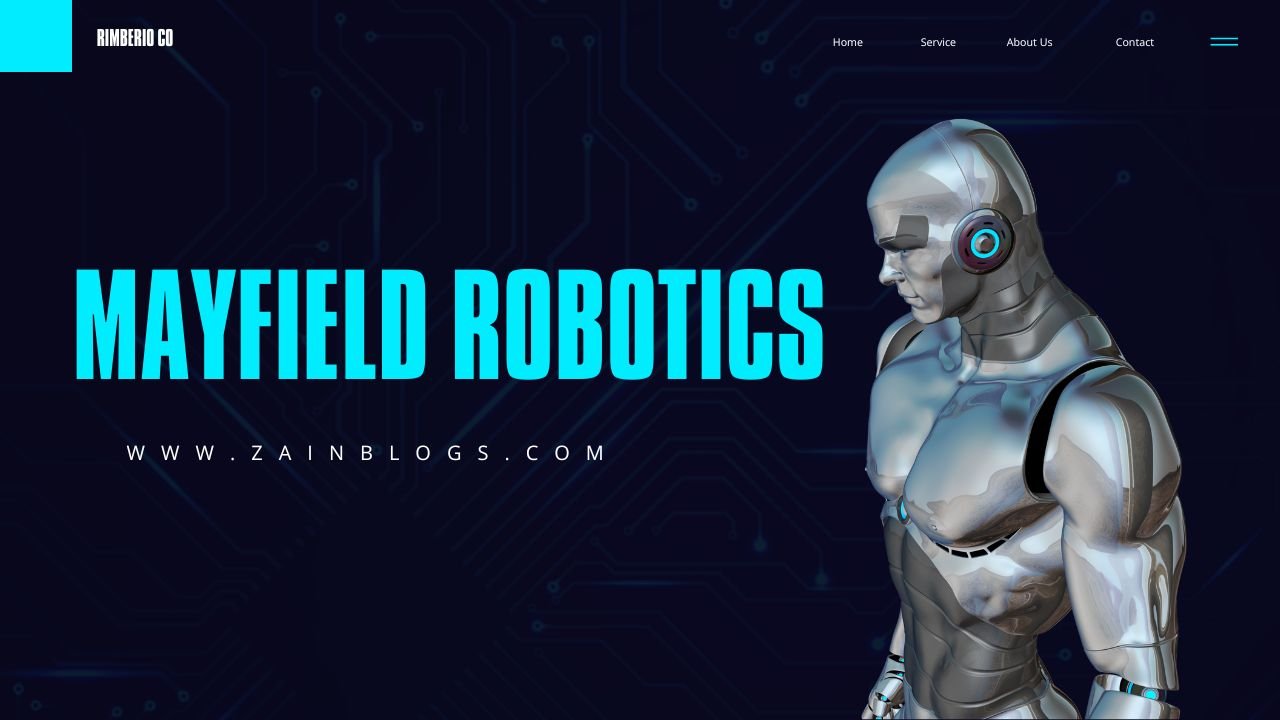Mayfield Robotics
Introduction to Humanoid Robots for Sale The dawn of the 21st century has ushered in an era where science fiction increasingly becomes science fact, particularly in the realm of robotics. Among the most fascinating advancements are humanoid robots—machines designed to mimic human form and function. These robots, once relegated to the imaginations of novelists and filmmakers, are now stepping into the commercial market, offering unprecedented opportunities for businesses, educators, and consumers alike. This article explores the burgeoning world of humanoid robots for sale, shedding light on their capabilities, applications, and where you can find them. Rise of Humanoid Robotics Humanoid robots, with their bipedal design and often human-like appearances, are engineered to perform a wide array of tasks that were once thought to be the exclusive domain of humans. From service and companionship roles to manufacturing and even healthcare assistance, the potential applications are vast and varied. As technology progresses, these robots are becoming increasingly sophisticated, capable of learning and adapting to new tasks through artificial intelligence (AI) and machine learning algorithms. Where to Find Humanoid Robots for Sale The market for humanoid robots is growing, with several key players emerging as leaders in the field. Companies like SoftBank Robotics with their Pepper robot, Boston Dynamics with Atlas, and Hanson Robotics with Sophia, have made headlines around the world for their innovative designs and capabilities. These robots are not just research projects but are available for commercial sale, targeting a range of sectors including retail, healthcare, education, and personal assistance. Company Robot Model Key Features SoftBank Robotics Pepper Emotion recognition, interactive customer service Boston Dynamics Atlas Advanced mobility, load-carrying Hanson Robotics Sophia Natural language processing, facial expressions Impact of Humanoid Robots The integration of humanoid robots into daily life and various industries holds the potential to revolutionize the way we live and work. These robots can handle tasks that are dangerous, repetitive, or require a level of precision that challenges even the most skilled human workers. Moreover, they can operate in environments that are inhospitable to humans, such as disaster zones or outer space. Humanoid robots serve as engaging tools for teaching coding, robotics, and STEM subjects, making learning interactive and fun for students of all ages. In healthcare, they assist in patient care, providing companionship and even helping with physical therapy and rehabilitation. As we stand on the brink of this new era, the possibilities seem limitless. However, it’s also essential to consider the ethical and societal implications of humanoid robots. Issues such as job displacement, privacy, and the ethical treatment of robots themselves are becoming increasingly relevant as these machines become more integrated into our lives. This introduction serves as the gateway to a deeper exploration of humanoid robots for sale. We’ll delve into their capabilities, the technology behind them, their applications, and much more, providing a comprehensive overview of these technological marvels. Capabilities of Humanoid Robots As we delve deeper into the world of humanoid robots for sale, it becomes crucial to understand the breadth of their capabilities. These machines, often inspired by human anatomy and cognition, are equipped with a variety of sensors and actuators that enable them to perform tasks ranging from simple interactions to complex problem-solving. Advanced Mobility and Dexterity One of the most striking features of humanoid robots is their ability to move and navigate environments in ways that mimic human motion. Equipped with bipedal locomotion systems, these robots can walk, turn, climb stairs, and even maintain balance on uneven surfaces. Their hands, designed with intricate articulation, allow for gripping and manipulating objects with surprising precision, enabling tasks from typing on keyboards to handling delicate materials in manufacturing processes. Cognitive Processing and AI At the heart of a humanoid robot’s capabilities is its cognitive processing power, driven by advanced artificial intelligence. These robots can process natural language, recognizing, and responding to voice commands, and engaging in basic conversations. AI algorithms enable them to learn from interactions and experiences, improving their responses and actions over time. This cognitive processing is crucial for tasks that require decision-making, problem-solving, and adaptation to new situations. Emotional Intelligence and Social Interaction A significant advancement in humanoid robotics is the development of emotional intelligence. Robots like Pepper are designed to recognize human emotions based on facial expressions, body language, and voice tones. This ability allows them to engage in social interactions that feel more natural and intuitive. Its making them ideal for roles in customer service, therapy, and education where empathetic responses are valuable. Environmental Awareness Humanoid robots are equipped with an array of sensors that help them understand and interact with their surroundings. Cameras, lidar, and infrared sensors provide visual and spatial data, enabling obstacle detection and navigation. Microphones allow for sound localization and voice recognition, adding another layer of interaction capability. Fusion of Capabilities: A Real-World Example To illustrate these capabilities in action, consider a humanoid robot deployed in a retail environment. It navigates through aisles with ease, avoiding obstacles and maintaining balance. When approached by a customer, it recognizes the query through natural language processing, accesses inventory data, and guides the customer to the product’s location. Throughout the interaction, it assesses the customer’s mood and adjusts its tone and gestures accordingly, ensuring a pleasant and efficient service experience. The capabilities of humanoid robots represent a blend of mechanical engineering, computer science, and cognitive psychology, among other disciplines. This fusion of technology and human-like attributes opens a new frontier in robotics, one where machines can work alongside humans in a variety of settings, enhancing productivity and even offering companionship. As we explore further, the applications of these robots in different sectors highlight the transformative potential they hold for society. Conclusion The exploration of humanoid robots for sale has traversed the realms of technological innovation, practical applications, and ethical considerations, presenting a comprehensive view of these marvels of modern engineering. As we stand on the cusp of a new era in robotics, it is evident that humanoid robots are not merely products of fanciful imagination but … Read more

